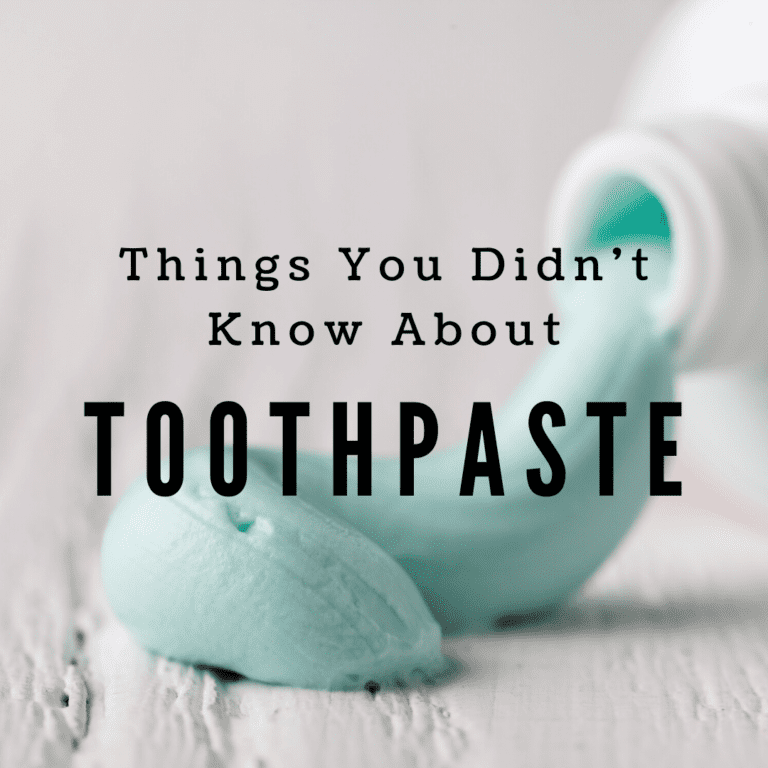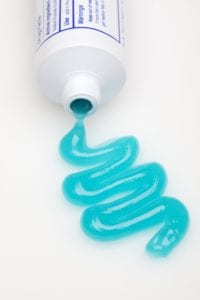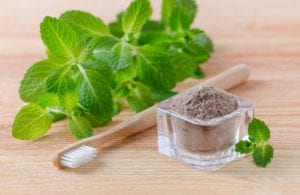Things You Didn’t Know About Toothpaste

Toothpaste is an integral part of your daily dental routine and is partially responsible for keeping your teeth clean and healthy. Although you use it twice a day to brush your teeth, chances are you have probably never put much thought into your toothpaste. However, if you did, you’d be surprised that there are some interesting things that you didn’t know about your toothpaste.
For starters, toothpaste is composed of various ingredients that are intended to promote your oral health. Although toothpastes can differ from one another, they all contain basic ingredients such as:

- A mild abrasive is used in coordination with a toothbrush to remove stains and debris. Some abrasives used for toothpaste include calcium carbonate, hydrated aluminum oxides, dehydrated silica gels, magnesium carbonate, phosphate salts, and silicates.
- Humectants are used to keep the toothpaste and your mouth moist to avoid drying out. Humectants used in toothpaste include glycerol, propylene glycol, and sorbitol.
- Flavoring agents are used to give you that sweet, minty fresh taste. Although sweet, there is no sugar used, only non-caloric sweeteners like saccharin.
- Thickening agents are used to stabilize the formula. These can include mineral colloids, natural gums, seaweed colloids, or synthetic cellulose.
- Detergent is used to spread the toothpaste around your teeth and is responsible for the foaming action that helps clean your teeth. Detergents can be either sodium lauryl sulfate or sodium N-lauryl sarcosinate.
- Water makes up approximately 20%-42% of toothpaste
There are also certain toothpastes that contain additional ingredients such as:
- Fluoride: helps to prevent cavities by strengthening the tooth enamel and also fights plaque and gingivitis to prevent gum disease. Since not all toothpastes contain fluoride, it is important to choose a toothpaste that has the ADA Seal of Acceptance.
- Whiteners: helps to remove surface stains in order to whiten your smile
- Desensitizers: helps to reduce tooth sensitivity in sensitive teeth and can include potassium nitrate or strontium chloride.
- Tartar Protection: ingredients such as pyrophosphates and zinc citrate are additives to toothpaste that helps to prevent the accumulation of tartar. In some cases, an antibiotic called triclosan can also be used to prevent or heal mild gum diseases.

One of the earliest toothpastes was actually a powder developed around 5000 BC by the Ancient Egyptians. This tooth powder was made of ox hooves, myrrh, eggshells, and pumice that were all burnt into ash. During the 18th century, tooth powder began to transition into toothpaste. Fluoride was later added to toothpaste in 1914.
All toothpastes are measured in RDA. RDA stands for “relative dentin abrasivity”, which basically means how abrasive a toothpaste is to the teeth. Although not all types of toothpaste list the RDA valued on their label, this value is required by the FDA. To give you a better idea of how RDA works, brushing with water alone produces an RDA of four, while brushing with baking soda is about seven. As a general rule, cavity prevention toothpastes generally have lower RDA numbers, however it is best to ask your dentist what RDA score is right for you. RDA scores can be broken down into the following:
- 0-70 low abrasive
- 70-100 medium abrasive
- 100-150 highly abrasive
- 150-250 harmfully abrasive (the ADA does not recommend any toothpaste over 250)






Recent Comments